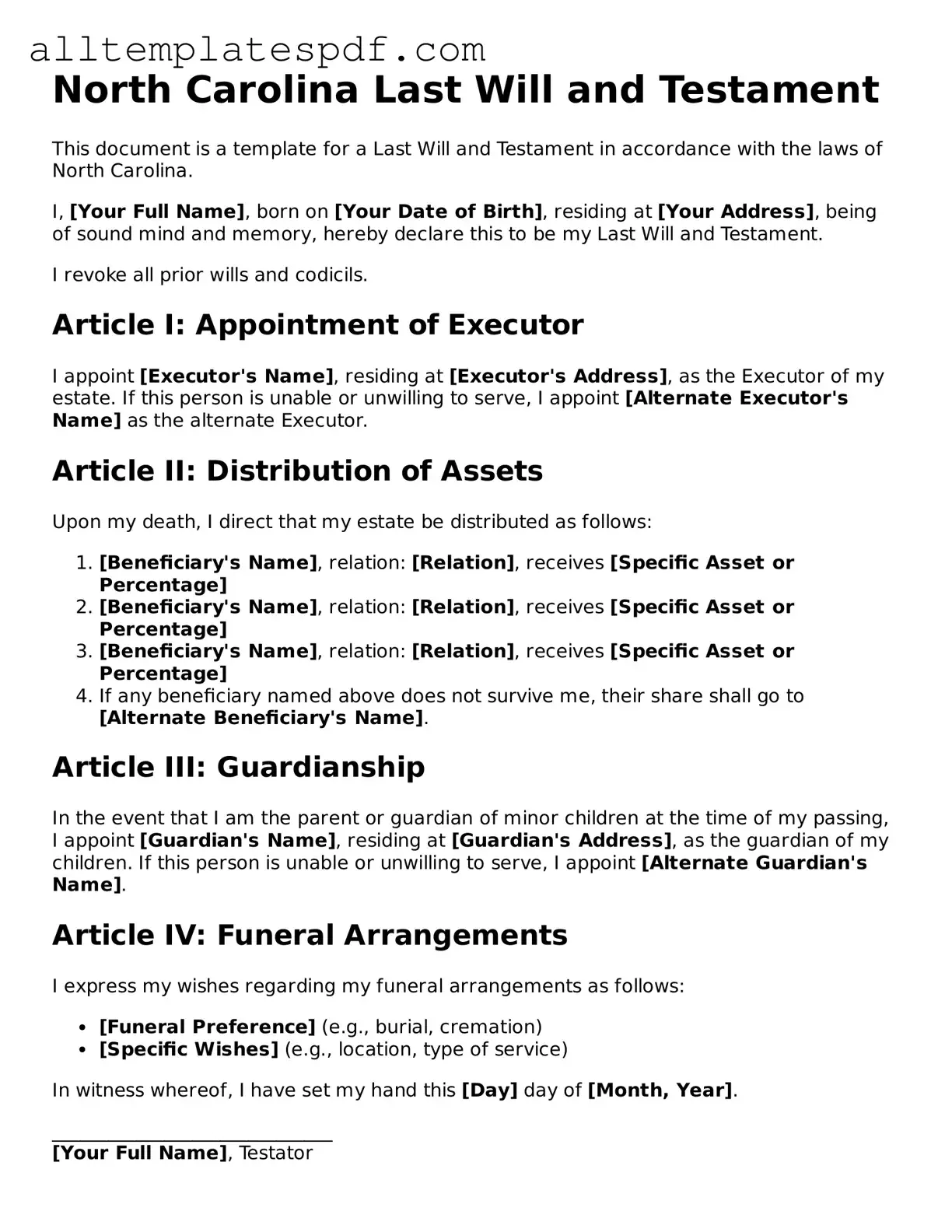Filling out a Last Will and Testament form is an important step in ensuring that your wishes are honored after your passing. However, many individuals make common mistakes that can lead to complications or even invalidate the document. One frequent error is failing to properly identify the testator, or the person creating the will. It’s crucial that the form clearly states the full legal name of the individual, as well as their address. Omitting this information can create confusion and lead to disputes among heirs.
Another mistake is not including the date on which the will is signed. The date is essential for establishing the will's validity and determining whether it supersedes any previous wills. Without a date, it becomes difficult to ascertain which document reflects the most current intentions of the testator. This can result in legal challenges and uncertainty regarding the distribution of assets.
People often overlook the importance of signatures. A will must be signed by the testator, and in some cases, it also requires the signatures of witnesses. In North Carolina, at least two witnesses must sign the will in the presence of the testator. If this step is neglected, the will may not hold up in court, leading to unintended consequences for the estate.
Additionally, individuals may fail to clearly specify their beneficiaries. It is not enough to simply name individuals; the will should include their full names and, if possible, their relationship to the testator. This level of detail helps to avoid ambiguity and ensures that the testator’s wishes are honored. Vague language can lead to disputes among family members and friends, which can be emotionally and financially draining.
Another common pitfall is not addressing potential changes in circumstances. Life events such as marriage, divorce, or the birth of children can significantly impact how one wishes to distribute their estate. Failing to update the will after such changes can result in outdated provisions that do not reflect the testator's current intentions. Regularly reviewing and revising the will is essential to ensure it remains relevant.
Lastly, many people neglect to store their will in a safe yet accessible location. It’s important to inform trusted family members or friends about where the will is kept. If the document cannot be located after the testator's death, the estate may be treated as if no will exists, potentially leading to the distribution of assets according to state law rather than the testator's wishes. Proper storage and communication can prevent this unfortunate outcome.
